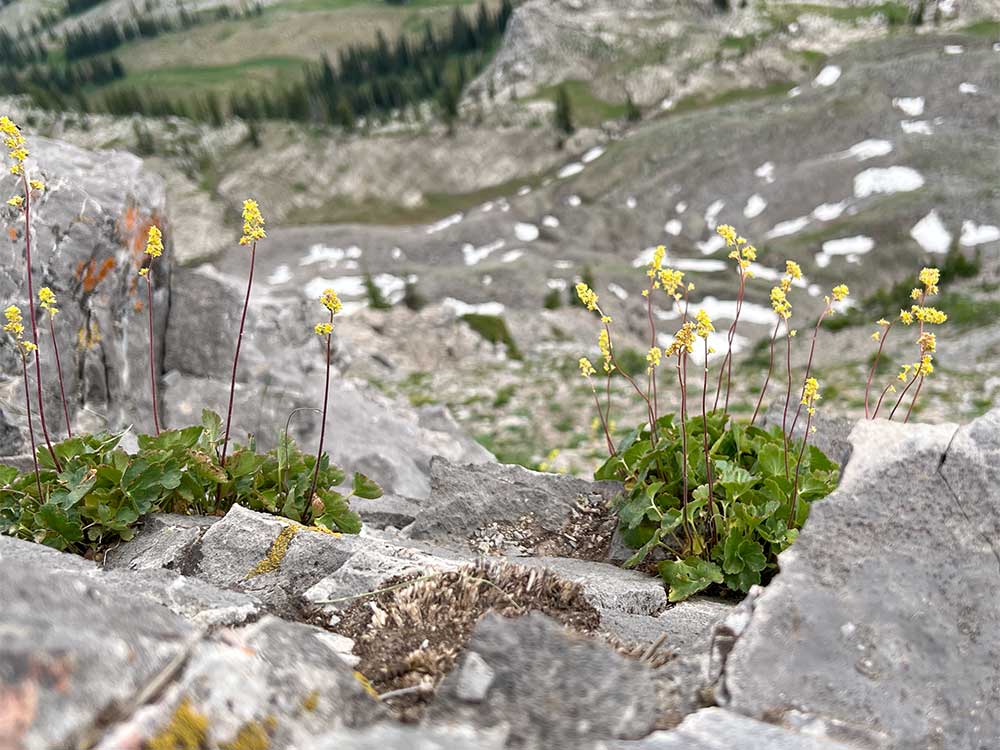Heuchera parvifolia / littleleaf alumroot
- subalpine, alpine… on rocks
- clusters of round or kidney-shaped leaves
- leaves lobed, all basal (no stem leaves)
- inflorescences tower over leaves
- clumps of teeny, yellow flowers along a spike-like flowering stalk
Also known as: common alumroot, alpine alumroot, coral bells, prairie alumroot
Littleleaf alumroot is a small but distinctive plant usually found on rocks in the subalpine or alpine zone. It tolerates dryer and harsher environments than most members of its genus. It is perennial and both leaves and flowering stalks grow from a woody caudex.
You might first see individual plants or little colonies, with bright green, round-ish leaves. And then, that the edges of the leaves are scalloped or toothed. And towering well above those leaves, there will be a group of slender, leafless flower stalks with irregularly spaced clumps of yellow flowers.
Littleleaf alumroot plants are stemless. The leaves have petioles, but otherwise are about as broad as they are long. Usually, they are shallowly divided into five or seven lobes. Sometimes not-so shallowly. Often, the flower stalks, petioles and leaf surfaces are covered with short, glandular hairs. You’ll have to rub them to notice this.
The inflorescence is a relatively dense, elongated cluster (spike-like panicle), which becomes more spread out in the fruiting stage. The cup-shaped, greenish-yellow flowers are teeny; five white or yellow petals alternate with five green, equally-sized, triangular sepals. There are five yellow stamens, which don’t extend past the petals.
Note: There are two Heuchera parvi-something species, this one (H. parvifolia) and H. parviflora. They are both called little alumroot. But one, this one, is found only in the west, and the other only in the SE US.
| Color | |
|---|---|
| Family | |
| Blossom size | |
| Inflorescence size | |
| Inflorescence type | |
| When? | |
| Where? |


